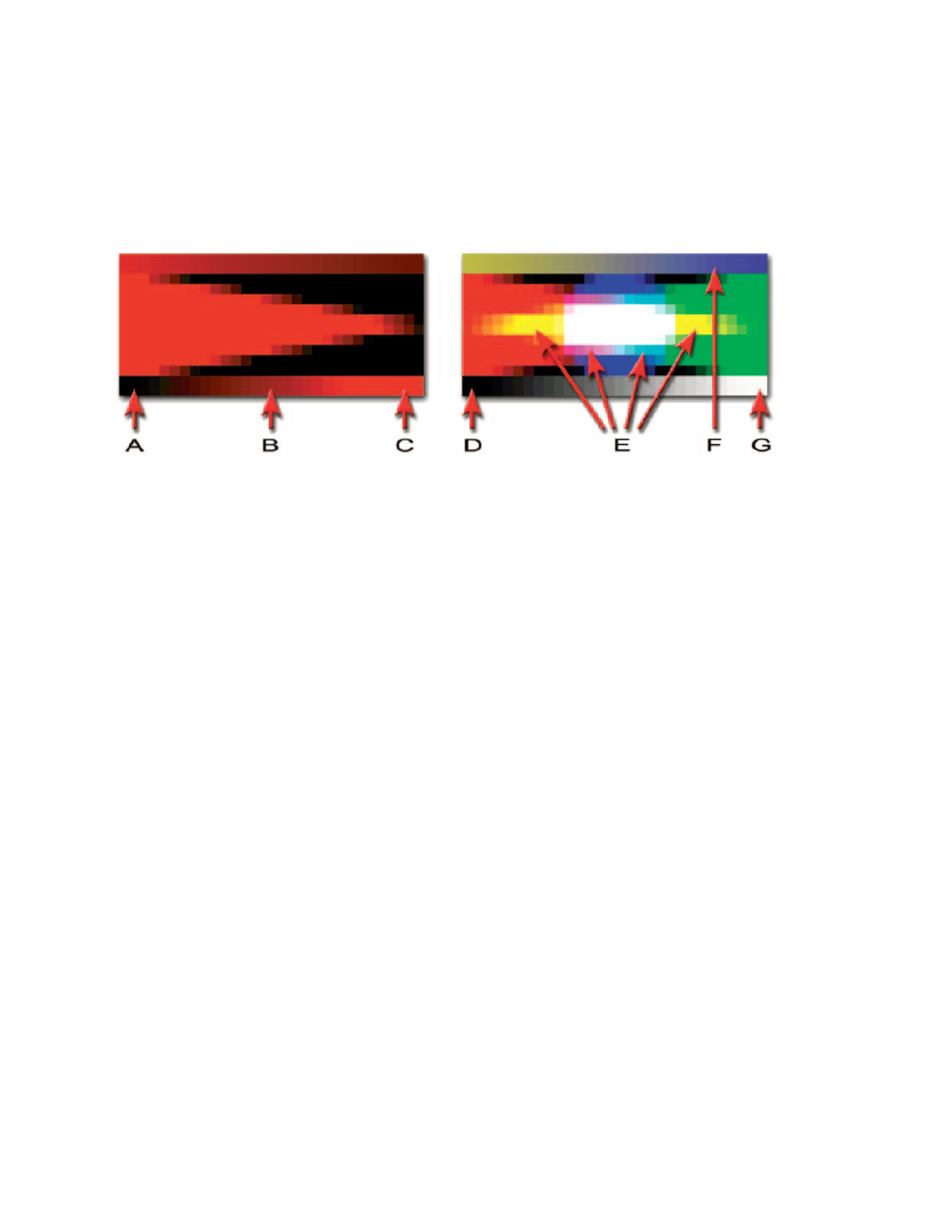

19
digital basics
/\L :H[\YH[PVU HUK )YPNO[ULZZ
Equally high levels in each of the three color channels creates not only a bright or light toned
pixel but may also indicate a bright level of illumination in the scene that has been captured.
This can be attributed to the pixel being a record of a bright light, or the reflected light off a
brightly illuminated subject, but it may alternatively be due to possible overexposure during the
capture process, i.e. the sensor being exposed to the light source for too long.
The illustration above shows the enormous variety of tones that can be achieved by combining
256 levels of information from the three color channels. Given that each channel can vary its
level of information, independently of the other two, it is possible to create a single pixel with
one of a possible 16.7 million different values (256 × 256 × 256). To describe the nature of a
particular color value without resorting to numbers, Adobe has adopted a system where the
characteristics of the color can be described in three ways. These descriptive categories are:
Hue
– as dictated by the dominant primary or secondary color, e.g. red, yellow, blue, etc.
Saturation
– the strength of the color, e.g. when one or two of the channels registers 0
the resulting color is fully saturated, i.e. no level of gray or white is weakening the purity
of the color.
Brightness
– from 0 (black – all channels 0) to 255 (at least one channel registering 255).
Using a common language of Hue, Saturation and Brightness (HSB) we can identify the colors
indicated by letters in the illustration above, in terms that can be readily understood by the
broader community that are neither mathematicians nor Photoshop nerds.
A
to
C
are levels of brightness from black to fully saturated bright red. The levels from the
other two RGB channels are not influencing the overall color or brightness of any of the pixels
(all Green and Blue values are set to level 0).
D
and
G
are levels of brightness from black to white. When all RGB channels read the same
level the resulting tones are fully desaturated.
E
indicates fully saturated secondary colors created by mixing two primary RGB channels at
level 255.
F
indicates colors of lower saturation as information from the three RGB channels is unequal
(therefore creating a gray component to the color’s characteristic).
















